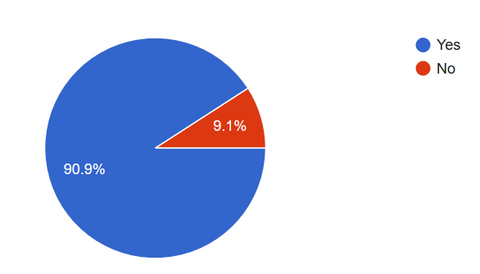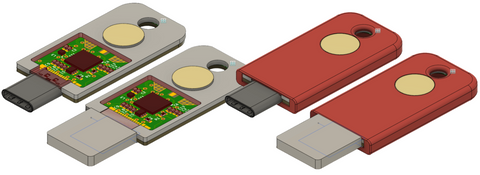Since it’s been some time since finishing our Kickstarter fulfillment, we sent out a survey to see how people liked Solo, and more importantly, didn’t like Solo.
After receiving hundreds of responses, I’d like to share what we learned and how we’re going to improve.
Some Basic Questions
Have you used any of your Solo keys?
How often do you use your Solo?
We're pretty happy to see that the majority of people (>90%) have used the keys they got, and nearly 50% of people use the keys at least weekly.
Net Promoter Score (NPS)
NPS is a standard metric that indicates how loyal your customers are and how likely they are to recommend your product to others. It’s measured simply by asking people how likely they are to recommend your service on a scale of 1 - 10, and then running a calculation.
It's a simple metric we're using to figure out how well we're doing.
We scored a positive 32, which is a pretty good for our first product release. We are not in a excellent or world class NPS category, but we have a significant customer satisfaction. For our next product cycle, we will aim to address the following feedback we got, and hopefully our NPS will increase.
What do you love about Solo?
We asked this as an open ended question, so these insights represent recurring comments.
- Open Source
- Small & nice looking form factor
- Colors
- Firmware updates & new features.
- Low cost
- Easy to use and setup
There were many other comments of course, but these represent the most common ones. Definitely plan to maintain these qualities.
What don’t you love?
Now for the tough question. But this is the most important place to look for improvements.
- Durability.
- The Silicone sock isn’t (or doesn’t seem) sufficient for some scenarios.
- Swimming/washing machines occasionally break keys.
- USB-C key is too thin and some people have broke it off accidentally.
- Case is difficult to get on USB-A and sometimes doesn’t fit well.
- Button takes too much force to press.
- No OpenPGP support or method for using with GnuPG/SSH/git (yet).
- The web update process is unreliable/buggy.
- Issues with NFC.
- Number of websites and browsers that support U2F or FIDO2.
We plan to address all of this feedback. Some can be done with firmware, but the rest will come in the next product cycle, estimated to be around the end of this year.
Durability
We plan to take a multilayered approach to our circuit.
The increased circuit thickness makes it very strong against bending.
The epoxy filled cavity permanently seals and protects the electronics, as well as making a strong mechanical connection with the USB-C connector.
Case is difficult to get on USB-A model
Previously this was due to using the same case on two PCBs of different thickness.
With our multilayered approach, the thickness on A and C model will be the same and will both have an optimal fit for the case.
Note that the overall thickness is about 3.9mm with the case -- which is thinner than our current USB-C model but way more durable!
Button takes too much force to press
We are switching to a capacitive touch button, so only a "touch", rather than "press" is needed.

No OpenPGP support
We are in progress of adding OpenPGP support as a firmware update to all models.
We're using funding from our Somu campaign to aid this. If you haven't already, back our Somu campaign!
Web update is buggy
Our original plan for leveraging the FIDO2 API as an update channel has not gone well as Microsoft has updated its WebAuthn UX.
We'll improve this by using a separate HID interface that will be available on our new microcontroller. Chrome WebUSB or our own Electron app will be able to handle the update process with a nice UX (in addition to our current CLI tool). Additionally, Linux users will soon be able to use fwupd/LVFS, the standard firmware update mechanism on that platform.
Issues with NFC
We ran into yield issues with our main NFC chip and also discovered a number of Android phones that can't power Solo Tap reliably.
The heart of the issue lies with an optimization problem with power consumption of the device, and how long it takes to compute signatures.
We're switching to a new microcontroller that is lower power and has acceleration for the signatures. So it can run in a lower power setting and still be able to compute fast enough. This will improve the NFC reliability by a good margin.
The microcontroller is the LPC55S69. It additionally has new security features, like ARM TrustZone, PUF, and secure boot with USB update support. This will enhance the security level of Solo.
Number of websites that support FIDO2
This is getting better and more services are continuing to take on FIDO2 and WebAuthn. Apple has added support to Safari and it's soon coming to iOS!
Want to help guide our next product cycle?
We want to talk to you! Sign up here.
Thanks for your support
Thanks to everyone for your support and feedback. We'll continue to iterate and hope to show you upgraded products soon!




